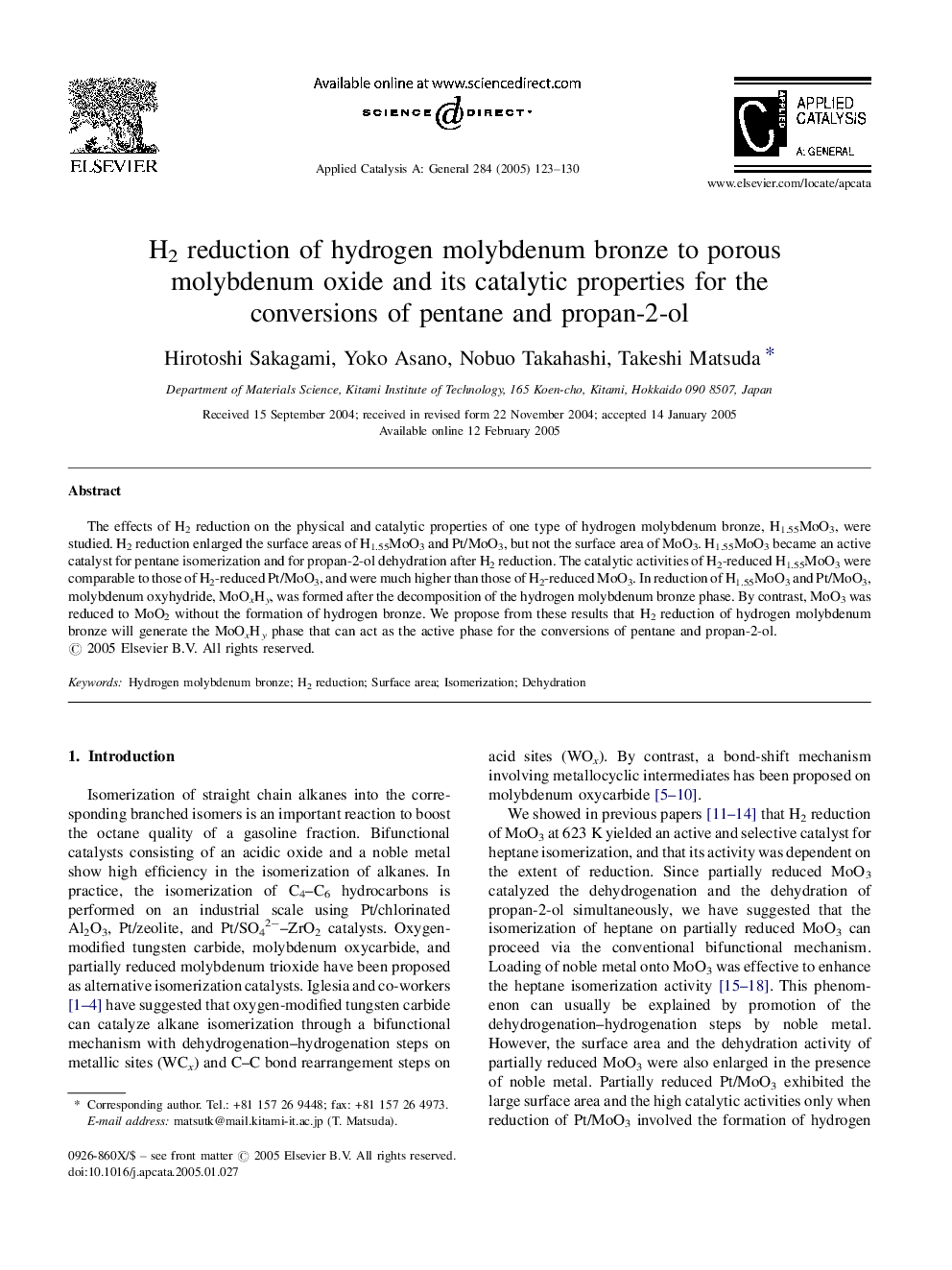| Article ID | Journal | Published Year | Pages | File Type |
|---|---|---|---|---|
| 9607978 | Applied Catalysis A: General | 2005 | 8 Pages |
Abstract
The effects of H2 reduction on the physical and catalytic properties of one type of hydrogen molybdenum bronze, H1.55MoO3, were studied. H2 reduction enlarged the surface areas of H1.55MoO3 and Pt/MoO3, but not the surface area of MoO3. H1.55MoO3 became an active catalyst for pentane isomerization and for propan-2-ol dehydration after H2 reduction. The catalytic activities of H2-reduced H1.55MoO3 were comparable to those of H2-reduced Pt/MoO3, and were much higher than those of H2-reduced MoO3. In reduction of H1.55MoO3 and Pt/MoO3, molybdenum oxyhydride, MoOxHy, was formed after the decomposition of the hydrogen molybdenum bronze phase. By contrast, MoO3 was reduced to MoO2 without the formation of hydrogen bronze. We propose from these results that H2 reduction of hydrogen molybdenum bronze will generate the MoOxHy phase that can act as the active phase for the conversions of pentane and propan-2-ol.
Related Topics
Physical Sciences and Engineering
Chemical Engineering
Catalysis
Authors
Hirotoshi Sakagami, Yoko Asano, Nobuo Takahashi, Takeshi Matsuda,
